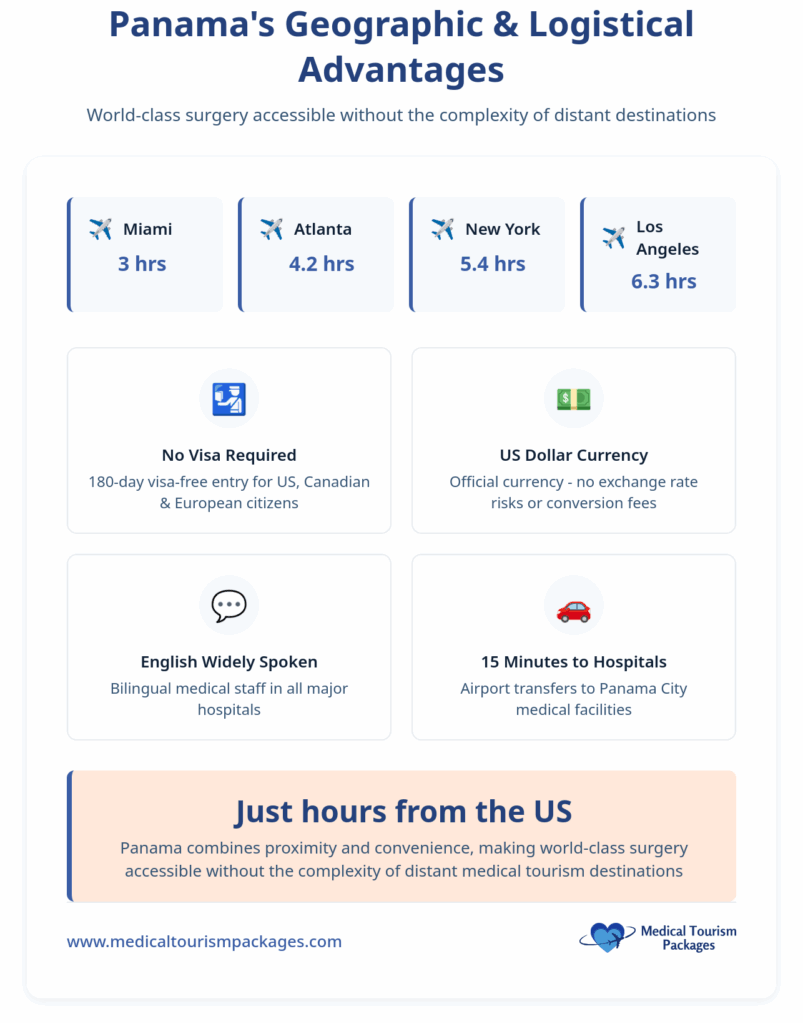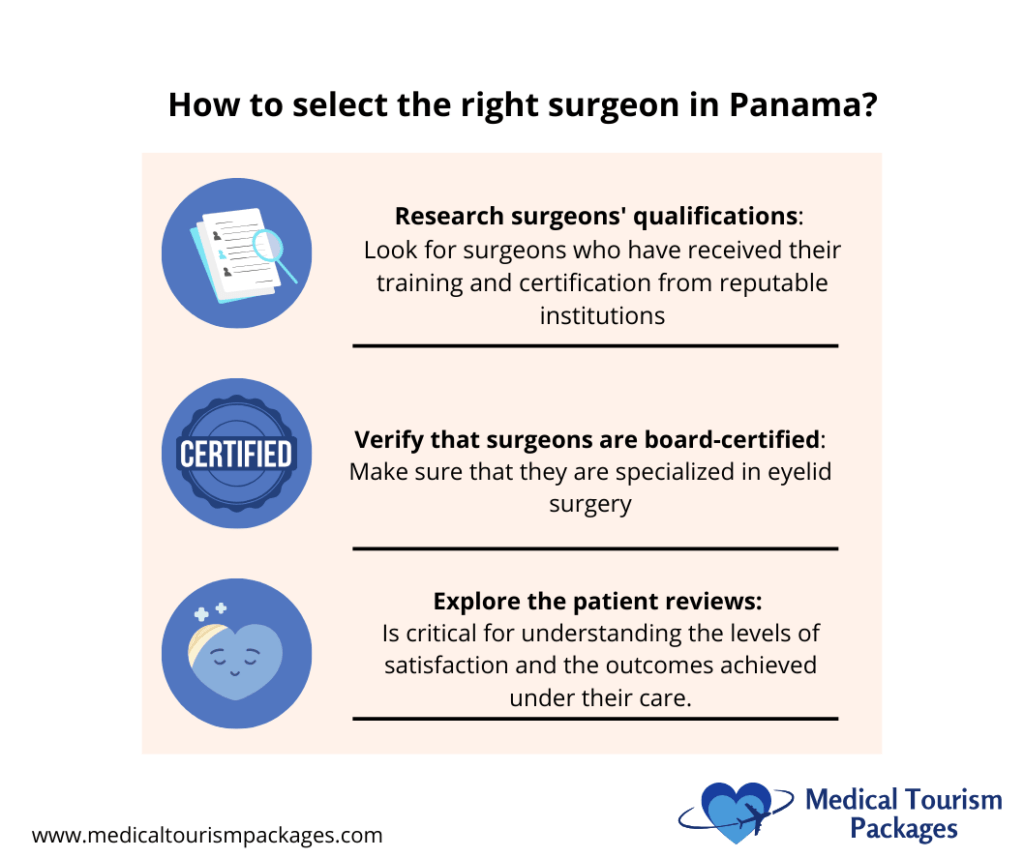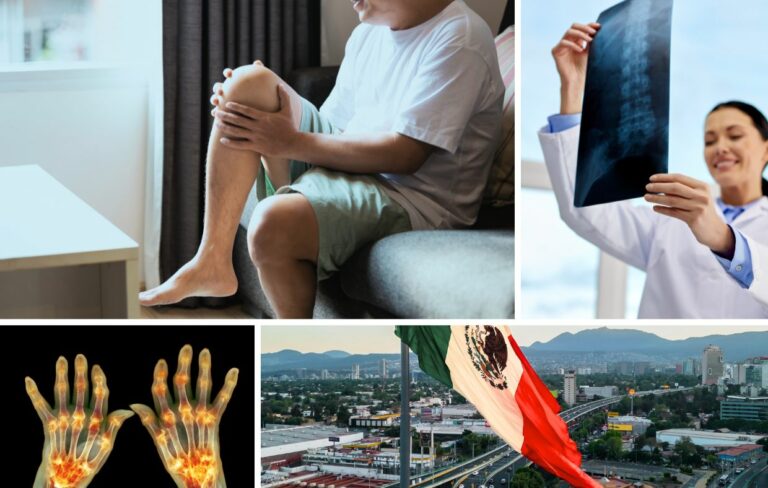Book Appointment Now

Surgical Procedures in Panama: Complete Guide, Costs, Top Hospitals, and Patient Outcomes
Panama has become a leading destination for medical tourists seeking high-quality surgical care at affordable prices. The country combines modern healthcare infrastructure with internationally trained surgeons and significant cost savings compared to the United States and Canada.
Medical tourists choose Panama for several key reasons. First, the country offers procedures that cost 40-70% less than in North America. Second, many Panamanian surgeons trained at top US and European medical institutions. Third, major hospitals hold international accreditations from organizations like Joint Commission International.
Panama City serves as the primary hub for medical tourism. The capital hosts state-of-the-art facilities that treat thousands of international patients annually. Popular procedures include orthopedic surgery, cardiac procedures, cosmetic surgery, and bariatric operations.
The country’s geographic location provides additional advantages. Panama sits just a few hours from major US cities by direct flight. The US dollar serves as official currency, which eliminates exchange rate concerns. Many healthcare providers employ bilingual staff who speak English fluently.
This guide covers everything you need to know about surgical procedures in Panama. You’ll learn about costs, top hospitals, surgeon credentials, patient outcomes, and practical planning steps. Whether you’re considering elective surgery or a necessary medical procedure, this information will help you make an informed decision about receiving care in Panama.
What Are Surgical Procedures in Panama?
Panama ranks as a premier destination for international medical tourists. Patients come primarily from the United States, Canada, and Europe seeking high-quality care at reduced costs. American patients can find comprehensive planning information in our complete guide for US medical tourists to Panama. Surgical procedures in Panama cost 40-70% less than in North America. This price difference applies to most elective and specialized treatments. Patients save thousands of dollars without sacrificing quality.
The country’s hospitals feature state-of-the-art facilities. They use modern surgical equipment and advanced medical technology. Many institutions hold international accreditations from recognized organizations. Panamanian hospitals maintain affiliations with leading US medical centers. These partnerships ensure adherence to American protocols and standards. Surgeons often trained at top US and European institutions.
Panama uses the US dollar as official currency. This eliminates exchange rate risks for American patients. Financial planning becomes simpler and more predictable. Medical tourists receive personalized care throughout their treatment. Doctors spend more time with each patient. Staff-to-patient ratios remain favorable compared to North American hospitals.
Waiting times are significantly shorter than in the US or Canada. Most patients schedule elective procedures within weeks. This quick access proves valuable for those facing long wait lists at home. Panama specializes in several surgical categories. Elective procedures include cosmetic surgery, orthopedic operations, and dental work. Specialized treatments cover cardiac procedures, bariatric surgery, and ophthalmology services. The country leads the region in regenerative medicine, offering stem cell therapies and advanced orthobiologic treatments.
Types of Surgical Procedures Commonly Performed by Surgeons in Panama
Panama offers a diverse range of surgical procedures across multiple specialties. The country has built a strong reputation for excellence in both elective and medically necessary operations. Panamanian surgeons possess expertise in complex procedures that match international standards. Medical tourists can access virtually any major surgical specialty available in North American hospitals. The concentration of skilled specialists and modern facilities makes Panama a comprehensive medical destination.
| Type of Surgery | Description | Popular Procedures | Renowned Hospitals/Clinics |
|---|---|---|---|
| Cosmetic and Plastic Surgery | Aesthetic and reconstructive procedures performed by board-certified plastic surgeons using advanced techniques | Liposuction, Breast Augmentation, Rhinoplasty, Facelifts | Hospital Punta Pacifica, Clinica San Fernando |
| Dental Surgery | Comprehensive dental treatments and restorative procedures performed in state-of-the-art dental facilities | Dental Implants, Full Mouth Restoration, Crowns, Veneers | Hospital Punta Pacifica, Clinica San Fernando, Hospital Nacional |
| Orthopedic Surgery | Joint replacement and musculoskeletal procedures using minimally invasive techniques when possible | Knee Replacement, Hip Replacement, Arthroscopy | Hospital Punta Pacifica, Clinica San Fernando |
| Cardiac Surgery | Heart and vascular procedures performed by experienced cardiac surgeons with modern catheterization labs | Angioplasty with Stent, Pacemaker Implantation | Hospital Punta Pacifica |
| Bariatric Surgery | Weight loss procedures for obesity treatment with comprehensive pre and post-operative support programs | Gastric Bypass, Sleeve Gastrectomy | Hospital Punta Pacifica, Clinica San Fernando, Hospital Nacional |
Why Panama Surgery Is Gaining Global Popularity
Panama surgery attracts growing numbers of international patients each year. The country offers high-quality care in JCI-accredited facilities that meet rigorous international standards. These accreditations ensure hospitals follow the same protocols as top medical centers in the United States and Europe.
Cost-effectiveness drives much of Panama’s appeal. Patients save 50-70% on surgical procedures compared to US and European prices. These savings apply across all major surgical specialties. The lower costs do not reflect inferior care but rather lower operational expenses and different healthcare economics.

Panamanian surgeons bring impressive credentials to their practice. Many trained at prestigious medical institutions in the United States and Europe. They completed residencies and fellowships at renowned hospitals before returning to Panama. This international training ensures familiarity with the latest surgical techniques and protocols.
Advanced facilities feature cutting-edge technology throughout Panama’s leading hospitals. Operating rooms contain the same equipment found in top-tier American hospitals. Diagnostic imaging, laboratory services, and surgical instruments meet international standards. Hospitals regularly update their technology to stay current with medical advances.
High patient satisfaction rates reflect the quality of care in Panama. International patients report positive experiences with both medical outcomes and service quality. Many return for additional procedures or refer family members. Online reviews and patient testimonials consistently praise Panamanian healthcare providers.
Comprehensive support services enhance the medical tourism experience. Hospitals employ international patient coordinators who speak multiple languages. These coordinators handle logistics including airport transfers, hotel arrangements, and appointment scheduling. Many facilities offer package deals that bundle surgery costs with accommodation and transportation.
| Procedure | Average Cost in Panama (USD) | Average Cost in the US (USD) | Quality of Care | Professional Expertise |
|---|---|---|---|---|
| Knee Replacement | $12,000 | $35,000 | High (JCI-accredited facilities) | US/European-trained orthopedic surgeons |
| Cardiac Bypass | $18,000 | $70,000 | High (JCI-accredited facilities) | Board-certified cardiac surgeons |
| Breast Augmentation | $5,000 | $10,000 | High (JCI-accredited facilities) | Internationally trained plastic surgeons |
| Dental Implants (per tooth) | $1,000 | $3,000 | High (modern dental facilities) | US/European-trained dentists |
| Hip Replacement | $13,000 | $40,000 | High (JCI-accredited facilities) | US/European-trained orthopedic surgeons |
| IVF (one cycle) | $5,500 | $15,000 | High (specialized fertility centers) | Board-certified reproductive endocrinologists |
| Face Lift | $6,000 | $15,000 | High (JCI-accredited facilities) | Internationally trained plastic surgeons |
| Root Canal | $300 | $1,200 | High (modern dental facilities) | Experienced endodontists |
| Gastric Sleeve | $9,000 | $20,000 | High (JCI-accredited facilities) | Board-certified bariatric surgeons |
| Cataract Surgery | $2,500 | $6,000 | High (specialized eye centers) | US/European-trained ophthalmologists |
Note: All costs are approximate and may vary based on individual case complexity, surgeon experience, and facility choice. Quality ratings reflect JCI accreditation status and international training standards.
Essential Preparation Steps Before Surgery in Panama
Proper preparation ensures a successful surgical experience in Panama. Medical tourists who plan thoroughly experience better outcomes and fewer complications. Taking time to research and organize details reduces stress and creates confidence. The following steps guide patients through the essential preparation process.
| Step | Description | Resources/Actions |
|---|---|---|
| 1. Choosing a Qualified Surgeon | Verify surgeon credentials and experience before committing to treatment | Research board certifications in relevant specialty; confirm training at US or European institutions; review patient testimonials and before/after photos; schedule video consultation to assess communication and comfort level; request documentation of surgical experience with your specific procedure |
| 2. Understanding Risks and Benefits | Gain realistic expectations about procedure outcomes and potential complications | Discuss all potential complications during consultation; ask about success rates and complication rates; request detailed explanation of recovery timeline; understand what results are achievable versus unrealistic expectations; obtain written treatment plan with risks clearly outlined |
| 3. Planning Recovery and Post-Operative Care | Arrange support systems and accommodations for healing period | Book recovery-friendly accommodations near hospital; arrange for companion or caregiver if recommended; confirm availability of telemedicine follow-ups after returning home; plan extended stay duration based on surgeon recommendations; identify local support services for immediate post-op period |
| 4. Verifying Medical Facility Accreditation | Confirm hospital meets international quality and safety standards | Check for Joint Commission International (JCI) accreditation status; verify US hospital affiliations such as Johns Hopkins Medicine International, Cleveland Clinic, Tulane University, or Baptist Health; review facility inspection reports; confirm availability of emergency services and ICU capabilities |
| 5. Travel and Visa Planning | Organize travel logistics and ensure proper documentation | Confirm passport validity extends 6 months beyond travel dates; verify 180-day visa-free entry for US, Canadian, and European citizens; book flights into Tocumen International Airport in Panama City; arrange airport transfers through hospital or coordinator; purchase travel insurance that covers medical tourism |
Legal and Ethical Standards Governing Surgeons in Panama
Panama maintains rigorous standards that ensure patient safety and care quality. The country’s healthcare system operates under comprehensive regulatory oversight. These standards protect both local residents and international medical tourists. Panama continuously updates its framework to align with global best practices.
Compliance with National Health Regulations and International Best Practices
Panama’s regulatory framework governs all aspects of medical practice. The Ministry of Health oversees licensing requirements for all healthcare professionals. Surgeons must obtain proper credentials before practicing in the country. They complete ongoing continuing education to maintain their licenses.

JCI accreditation represents the gold-star standard for Panamanian hospitals. This accreditation requires facilities to meet hundreds of rigorous performance standards. Hospitals undergo regular inspections and audits to maintain certification. The process ensures alignment with international healthcare protocols.
Panamanian medical institutions follow international standards in all clinical areas. They adopt evidence-based practices from leading medical organizations worldwide. Quality assurance programs monitor patient outcomes and safety metrics. These measures create consistency with care delivered in the United States and Europe.
Patient Rights and Informed Consent for Panama Surgery
Law 68 of 2003 establishes comprehensive patient rights in Panama. This legislation guarantees the right to informed consent before any medical procedure. Patients must receive complete information about their treatment in understandable terms. The law also protects patient confidentiality and medical record privacy.
Surgeons conduct thorough consultations before procedures. They explain risks, benefits, and alternatives in detail. Patients receive written documentation of their treatment plans. This process ensures patients make informed decisions about their care.
Documentation requirements protect both patients and providers. Medical records must include signed consent forms and consultation notes. Hospitals maintain detailed records of all communications with patients. The government is currently reviewing modernizing legislation through Anteproyecto de Ley N° 69. This pending bill would update patient protection standards to reflect current medical practices.
Ethical Considerations in Medical Tourism and Malpractice Concerns
Panama faces a significant “malpractice gap” in its legal framework. The country lacks specific modern legislation addressing medical malpractice claims. No straightforward civil lawsuit path exists for patients seeking compensation for medical errors. This creates challenges for international patients accustomed to robust legal protections.
Patients cannot simply file civil lawsuits against negligent providers. They must navigate the criminal justice system to pursue malpractice claims. This process proves complex and time-consuming for foreign nationals. The burden of proof falls heavily on the patient in these cases.
Some hospitals address this gap through private insurance arrangements. Leading facilities maintain malpractice insurance as part of their international patient programs. These policies provide some recourse for patients who experience complications. However, coverage varies significantly between institutions.
Comprehensive travel medical insurance becomes essential for Panama surgery patients. Standard health insurance from home countries typically excludes overseas elective procedures. Specialized medical tourism insurance covers complications and follow-up care. These policies may include medical evacuation and legal assistance.
Medical tourism raises ethical questions about healthcare resource allocation. International patients generate revenue but may strain local healthcare capacity. Leading hospitals balance international and local patient populations. They invest tourism profits into facility improvements that benefit all patients. Some critics argue this creates a two-tier system. Hospitals counter that medical tourism brings expertise and technology to Panama.
Impact of Panama Surgery on the National Healthcare System
Panama surgery creates significant effects on the country’s healthcare landscape. Medical tourism brings substantial benefits to the healthcare sector. The industry also presents management challenges that require careful attention. Understanding these impacts helps assess Panama’s long-term viability as a medical destination.
Economic Benefits from Medical Tourism Revenue
Foreign patient revenue drives major investments in healthcare infrastructure. Hospitals use international patient income to upgrade facilities and purchase advanced equipment. These improvements would not occur as quickly without medical tourism dollars. The financial boost accelerates Panama’s healthcare modernization.
Medical tourism enables hospitals to invest in specialized training programs. Staff receive education in the latest surgical techniques and patient care protocols. Revenue supports sending physicians abroad for advanced fellowship training. These programs enhance expertise across all medical specialties.
Certain specialties benefit particularly from medical tourism growth. Cosmetic surgery departments attract substantial international patient volumes. This demand supports specialized equipment purchases and technique refinement. Cardiac care similarly benefits from high-volume international patient programs. Revenue allows cardiac centers to maintain cutting-edge catheterization labs and surgical suites.
Improved Healthcare Standards Through International Demand
Medical tourism demand drives continuous improvements in care standards. Hospitals competing for international patients must meet rigorous quality benchmarks. This competition raises the bar for all healthcare providers in Panama. Facilities cannot attract medical tourists without demonstrating excellence.
International patients expect the latest technologies and treatment protocols. Hospitals respond by adopting innovations quickly after they prove effective. They implement evidence-based practices from leading global medical institutions. This rapid adoption benefits all patients who use these facilities.
The pursuit of international accreditations improves systematic quality measures. Hospitals seeking JCI certification must overhaul processes and documentation systems. Staff training becomes more rigorous and comprehensive. These improvements persist long after accreditation and benefit domestic patients equally.
Healthcare Accessibility Considerations for Local Residents
Increased medical tourism demand can affect local healthcare access. Popular hospitals may experience higher patient volumes overall. This growth potentially increases wait times for certain procedures. Some local residents express concerns about prioritization of international patients.
Cost pressures may emerge as facilities upgrade to international standards. Hospitals invest heavily in equipment and accreditations to attract medical tourists. These investments can translate to higher prices for services. Local patients without comprehensive insurance may face affordability challenges.
Balanced management proves essential for equitable access. Leading hospitals maintain dedicated capacity for local emergency and urgent care. They schedule elective procedures to serve both international and domestic patients fairly. Some institutions implement pricing tiers that make services accessible to Panamanians.
The government monitors healthcare accessibility as medical tourism grows. Regulatory oversight ensures private hospitals fulfill obligations to local communities. Public healthcare facilities continue serving residents who cannot afford private care. This parallel system helps maintain access while allowing medical tourism growth.
Plan Your Panama Surgery with Expert Support
Navigating medical tourism in Panama requires careful planning and local expertise. Medical Tourism Packages specializes in connecting international patients with accredited hospitals, qualified surgeons, and comprehensive care coordination. Our team handles every detail from initial consultations to post-operative follow-ups, ensuring your medical journey proceeds smoothly.
Ready to explore surgical options in Panama? Contact Medical Tourism Packages today for personalized guidance. We’ll help you verify credentials, compare costs, arrange travel logistics, and coordinate with top-rated facilities. Let our experience simplify your path to affordable, high-quality healthcare in Panama.
Frequently Asked Questions About Surgery in Panama
How much can I actually save by having surgery in Panama?
Most patients save 40–70% versus U.S. prices. For example, a knee replacement averages about $12,000 in Panama vs. $35,000 in the U.S., and a cardiac bypass is around $18,000 vs. $70,000. Even with travel and lodging, savings typically range from several thousand to tens of thousands of dollars, depending on the procedure.
Are Panamanian hospitals and surgeons safe and qualified?
Yes. Leading hospitals hold Joint Commission International (JCI) accreditation. Many surgeons trained in the U.S. and Europe, completing residencies and fellowships at top institutions. Facilities like Hospital Punta Pacifica are affiliated with Johns Hopkins Medicine International and follow American protocols and standards.
Do I need a visa to travel to Panama for surgery?
U.S., Canadian, and most European citizens receive visa-free entry for up to 180 days. You’ll need a passport valid at least six months beyond your travel dates—enough time for consults, surgery, recovery, and follow-ups without visa complications.
Will language be a barrier during my medical care?
Language barriers are minimal at major medical tourism facilities. Most physicians who treat international patients speak fluent English, and hospitals staff bilingual teams and dedicated international coordinators to assist throughout your stay.
What happens if I experience complications after returning home?
Reputable hospitals provide telemedicine follow-ups so your surgeon can assess issues remotely and coordinate with local doctors if needed. Before traveling, confirm the hospital’s complication protocol and carry comprehensive travel medical insurance. Keep copies of all records and your Panamanian care team’s contacts.
Is there legal protection if something goes wrong with my surgery?
Panama has a significant malpractice gap for foreigners. There’s no straightforward civil lawsuit path for medical errors; claims typically go through the criminal justice system, which is complex for non-residents. Some hospitals hold malpractice insurance for international patients, but coverage varies—robust travel medical insurance is essential.
How long should I plan to stay in Panama for recovery?
Recovery time depends on the procedure: minor dental work may need 3–5 days; orthopedic surgeries typically 7–14 days before safe travel; major cardiac or bariatric procedures often 10–21 days. Follow your surgeon’s personalized recommendation, stay near the hospital, and consider bringing a companion if advised.
How do I choose the right hospital and surgeon in Panama?
Verify JCI accreditation and U.S. affiliations (e.g., Johns Hopkins, Cleveland Clinic, Tulane, Baptist Health). Check surgeon credentials, board certifications, training history, and specific case volume for your procedure. Review patient testimonials and before–after photos, and use video consults to gauge communication and fit. Medical Tourism Packages can help you compare vetted options and verify credentials.



